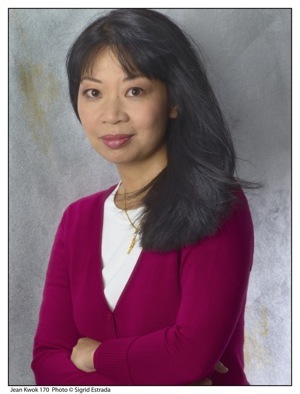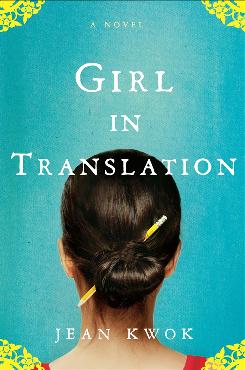Jean Kwok and the Girl in Translation
by Amanda Cardo / April 27, 2011 / No comments
Jean Kwok, author of Girl in Translation, will be reading for City of Asylum/Pittsburgh in May 2011 on her whirlwind international book tour. Her debut novel is a coming-of-age story about Kimberly Chang, a Chinese immigrant trying to survive in New York City.
In the book, published by Penguin, readers follow Kim as she balances a life divided between two very different cultures. From working in a sweatshop to attending a prestigious private high school, Kim experiences American life through very particular eyes. Readers explore the complex relationships between mothers and daughters, immigrants and natives, and maybe most importantly, the understanding of the self.
In April, Jean gave Sampsonia Way some of her time to answer questions about Girl in Translation. This interview is part one of a two-part collection.
You have said Girl in Translation is a fictional take on your own childhood. Why did you decide to use fiction to explore your past?
I suppose there were two main reasons I chose fiction rather than memoir. First of all, I never wanted to talk about my own background. I thought I’d be able to hide behind the fact that this is a novel but when the book began to receive a great deal of international attention, it became clear that the autobiographical aspect was an essential part of my message. People wanted to know if working-class immigrants could actually live under such circumstances, and I understood that it was important to answer, “Yes.”
The second reason is that in order to make the book a compelling read, I needed to experiment with language and structure in ways that are not possible in a memoir. I’m always so glad when people tell me how effortlessly the novel flows but there’s actually a great deal of craft behind creating a seamless and moving book. It took me ten years to develop the skills necessary to write this book, so although the novel is partly drawn from my own life, it is actually a crafted piece of fiction designed to transport the reader into a new world.
How are you and your character, Kimberly Chang, similar?
Like Kimberly and her mother, my family and I also immigrated from Hong Kong to New York City when I was a child. We, too, went from being fairly well off to needing to start our lives all over again. When my family started working in a sweatshop in Chinatown to survive, I had to go along to help work, even though I was only five years old.
We lived in an apartment that didn’t have any central heating and was swarming with cockroaches and rats. The only way to have any warmth at all was to keep our oven door open throughout the long bitter winters. Fortunately, like Kimberly, I also had a talent for school. Although I struggled initially, I was soon able to learn English and ultimately went on to study at Harvard University.
You use Chinese phrases translated into English like “picking up dead chicken” (meaning: piece of cake). This allows the reader a glimpse into Chinese culture and shows English speakers how laden Chinese is with subtext. What was your rationale for this?
It was my hope to put the reader into the head and heart of a Chinese person and to give English-speaking readers a unique experience: to actually become a Chinese immigrant for the course of my book. They would hear Chinese like a native speaker and perceive English as gibberish. I hoped my readers would experience something so many immigrants live with every day – being thoughtful, intelligent, and articulate in your own language, but coming across as ignorant and uneducated in English.
With Chinese so close to your heart, why did you choose to write the novel in English?
Chinese was my first language but English is my instrument. Like many gifts, this was not something that I chose but rather was chosen for me. Since I was bilingual from a very young age, my understanding of language has always been that it flows into and out of a wordless place deep in our souls.
Sometimes, when I’m switching quickly in between languages, I’m not sure which language I’ve been speaking. My husband claims that when I wake up in the middle of the night, I mumble in Chinese before falling asleep again. In addition to Chinese and English, I also studied Latin for eight years and now live in the Netherlands, where I function in Dutch most of the time.
With this novel, I wanted to share the way I’d always experienced language with my readers and it occurred to me to use the first person narrator – the “I” voice – in a new way. There have been many unreliable narrators in literature, influencing our perceptions through their viewpoint, but I wanted to have a narrator filter language and culture for us.
There is a prolific absence of father figures in the book. Kim’s father is only mentioned in regards to his absence, Matt’s father is cast in a very negative light, and Annette’s father is never mentioned. Why did you choose to make fathers a non-issue?
I didn’t deliberately mean to ignore fathers but my focus in this book was on Kim’s relationship with her mother, probably because I started by wanting to write this book for my own mother. My own childhood was not easy but my mother’s life in those days was much more difficult.
My main memory of my youth is of my mother sitting by the open oven door in our kitchen, falling asleep over stacks of clothing that she had brought home from the factory. She never once went to bed before I did. And now that I’m a mom myself, I realize how heart-wrenching it must have been for my mother to have been forced to subject me to our difficult living and working conditions.
My own father was ill in those days so the bulk of our burden fell upon my mother’s shoulders. This all has special meaning to me because my mother passed away recently, in October 2010, and I feel that in a way, she lives on in the book.
Where do you see Kim now?
Many readers have asked me about Kimberly’s future and I love it that they care so much about Kimberly and Ma that they want to keep following their lives, because I feel the same way! However, I’m afraid that I am not going to write a sequel to this book because it was designed to stand alone. However, I do know exactly what happens to all of the characters later on in life and will be offering readers a very brief glimpse into their futures in my next book. Kimberly and a mystery character will make a cameo appearance.
I will say that Kim is resilient and strong, and she made the only choice she could at the end of the book. Although she needed to make sacrifices, she stayed true to herself and that allows her the possibility of true peace and happiness. In other words, Kimberly Chang will be just fine.
On May 11, Jean Kwok read from Girl in Translation for City of Asylum/Pittsburgh on the Northside.
Read Jean Kwok and the Girl in Translation Part II
Click here to buy a copy of Girl in Translation






